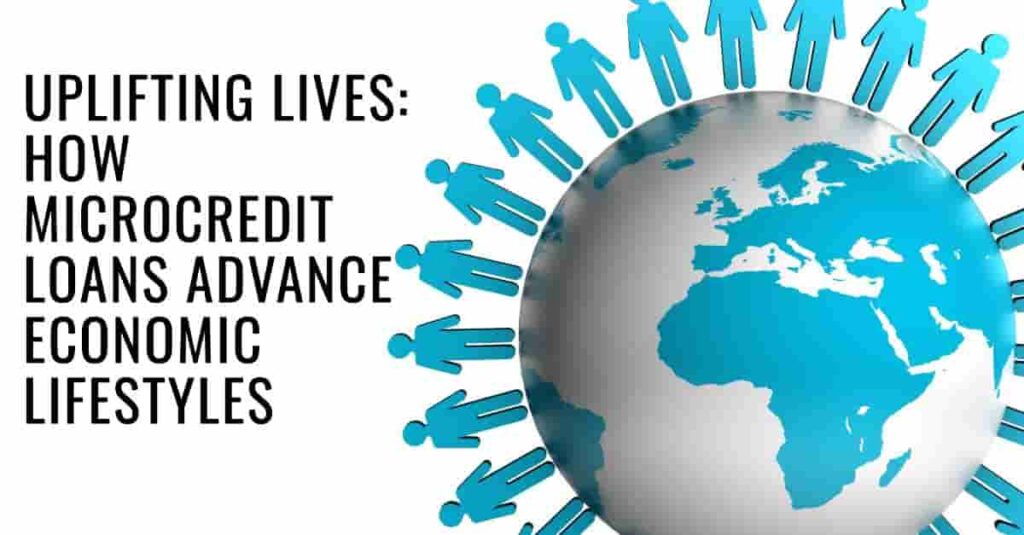Innovations in Loan Repayment Systems: Flexible Solutions for Modern Borrowers

In an era marked by economic volatility and rapid technological advancement, the traditional methods of loan repayment are increasingly being challenged. Modern borrowers require flexible, adaptive, and personalized repayment solutions that align with their unique financial situations and changing economic landscapes. Innovations in loan repayment systems have emerged to address these needs, offering more manageable, efficient, and borrower-friendly options. This essay delves into these innovations, with a particular focus on how the Valdymas Entrepreneurial and Transformational Leadership Empowerment Program (VETLEP) is at the forefront of integrating flexible repayment solutions into its financial offerings. By examining VETLEP’s approach to collateral-free loans, flexible repayment options, and savings integration, we can better understand how contemporary financial systems are evolving to meet the needs of today’s borrowers.
The Traditional Loan Repayment Framework
Historically, loan repayment systems have been characterized by fixed schedules and predetermined terms. Borrowers typically agree to a set repayment amount and schedule at the outset, which remains constant throughout the loan term. This rigidity, while straightforward, often fails to account for the dynamic financial situations that borrowers may encounter.
Traditional loans, such as those involving fixed monthly payments, are based on the assumption of stable income and expenses. However, this model does not adequately address the needs of borrowers who experience variable income, irregular expenses, or sudden financial shocks. As a result, many borrowers find themselves struggling to keep up with payments, leading to increased instances of delinquency and default (Harvard Business Review, 2022).
Emergence of Flexible Repayment Solutions
The need for more adaptable loan repayment systems has led to the development of several innovative approaches. These solutions aim to provide greater flexibility, enhance borrower satisfaction, and reduce the risk of default. Some of the most notable innovations include adjustable payment schedules, income-based repayment plans, and automated repayment adjustments.
Adjustable Payment Schedules
One of the most significant advancements in loan repayment systems is the introduction of adjustable payment schedules. Unlike fixed payment plans, adjustable schedules allow borrowers to modify their repayment amounts based on their current financial situation. This innovation is particularly beneficial for individuals and businesses with fluctuating income, such as freelancers, seasonal workers, or small business owners.
Adjustable payment schedules offer several advantages. First, they enable borrowers to align their payments with their cash flow, reducing the likelihood of financial strain. For instance, during periods of higher income, borrowers can make larger payments, while during leaner periods, they can opt for reduced payments. This flexibility helps maintain financial stability and reduces the risk of default (Federal Reserve, 2023).
Second, adjustable payment schedules provide a safety net for borrowers facing temporary financial difficulties. For example, during an economic downturn or personal financial crisis, borrowers can temporarily reduce their payments without facing penalties. This adaptive approach helps borrowers navigate challenging periods more effectively and supports long-term financial health.
Income-Based Repayment Plans
Another significant innovation is the income-based repayment plan. This model ties loan repayments to the borrower’s income level, ensuring that payments are proportional to their financial capacity. Income-based repayment plans are particularly useful for borrowers with variable or lower incomes, as they adjust payments based on earnings.
This approach provides several benefits. First, it ensures that loan payments remain affordable, even if the borrower’s income fluctuates. By linking payments to income, borrowers are less likely to be overwhelmed by unmanageable debt levels. For example, if a borrower experiences a decrease in income, their repayment amount will decrease proportionally, reducing financial stress (World Bank, 2021).
Second, income-based repayment plans promote financial stability and encourage responsible borrowing. By ensuring that payments are in line with the borrower’s ability to pay, these plans help maintain financial balance and prevent borrowers from falling into debt traps. Additionally, they incentivize borrowers to manage their finances prudently, knowing that their repayment obligations will adjust based on their financial situation.
Automated Repayment Adjustments
Advances in technology have enabled the development of automated repayment adjustments, a cutting-edge innovation in loan repayment systems. Automated adjustments involve the use of real-time financial data to dynamically modify loan terms and payment amounts. This technology leverages data analytics and machine learning to monitor borrowers’ financial conditions and adjust repayments accordingly.
Automated repayment adjustments offer several advantages. First, they provide a high level of personalization, as loan terms and payments are tailored to the borrower’s specific financial situation. For example, if a borrower’s income increases, the system can automatically adjust their payment amount to reflect this change, ensuring that repayments remain manageable (European Commission, 2022).
Second, automated adjustments enhance borrower convenience by eliminating the need for manual intervention. Borrowers no longer need to contact their lender to request changes to their repayment plan; instead, the system automatically adapts to their financial conditions. This seamless integration reduces administrative burdens and improves the overall borrower experience.
Valdymas Entrepreneurial and Transformational Leadership Empowerment Program (VETLEP): A Case Study
The Valdymas Entrepreneurial and Transformational Leadership Empowerment Program (VETLEP) exemplifies how innovative repayment solutions can be integrated into a comprehensive financial support system. VETLEP offers collateral-free loans to small businesses, a significant departure from traditional lending practices that often require substantial collateral. This approach reflects a commitment to inclusivity and accessibility, particularly for entrepreneurs who may lack significant assets but have strong business potential.
Flexible Repayment Options at VETLEP
VETLEP incorporates flexible repayment options into its loan offerings, addressing the needs of small business owners who face variable income and financial uncertainty. By providing adjustable payment schedules, VETLEP allows borrowers to tailor their repayments based on their cash flow and business performance. This flexibility is crucial for entrepreneurs, who often experience fluctuations in revenue due to seasonal variations, economic conditions, or market dynamics (VETLEP, 2024).
In addition to adjustable schedules, VETLEP offers income-based repayment plans for its borrowers. This approach aligns repayments with the borrower’s financial capacity, ensuring that payments remain manageable regardless of income fluctuations. By linking repayments to income, VETLEP helps entrepreneurs maintain financial stability and avoid the pitfalls of fixed repayment obligations.
The Role of Savings and Financial Management
A key component of VETLEP’s approach is its emphasis on savings and financial management. VETLEP encourages entrepreneurs to develop a savings habit and build a financial safety net, which complements the flexible repayment options offered. By fostering a culture of savings, VETLEP helps borrowers prepare for future financial challenges and manage their debt more effectively. Promoting savings as part of the financial management strategy encourages responsible borrowing and long-term financial planning. Entrepreneurs who prioritize savings are better equipped to handle economic fluctuations, invest in growth opportunities, and achieve sustainable business success.
Impact and Benefits of Innovative Repayment Systems
The adoption of innovative repayment systems offers numerous advantages for both borrowers and lenders. For borrowers, these systems provide greater flexibility, convenience, and financial management capabilities. Adjustable payment schedules, income-based plans, and automated adjustments help borrowers align their repayments with their financial realities, reducing stress and improving overall satisfaction.
For lenders, innovative repayment systems can enhance loan performance and reduce the risk of default. By offering tailored solutions that meet the diverse needs of borrowers, lenders can maintain better relationships with their clients and foster long-term loyalty. Additionally, these innovations contribute to a more inclusive financial environment by providing adaptable solutions that address the challenges faced by modern borrowers (Harvard Business Review, 2022; World Bank, 2021).
Innovations in loan repayment systems are transforming the financial landscape, offering more flexible and adaptive solutions for modern borrowers. The introduction of adjustable payment schedules, income-based repayment plans, and automated adjustments reflects a growing recognition of the need for personalized and responsive financial solutions. The Valdymas Entrepreneurial and Transformational Leadership Empowerment Program (VETLEP) exemplifies these advancements by integrating flexible repayment options, collateral-free loans, and a focus on savings and financial management. This comprehensive approach supports entrepreneurs in managing their financial obligations more effectively and achieving long-term success. As financial systems continue to evolve, embracing these innovations will be crucial for meeting the needs of today’s borrowers and promoting economic resilience.
Bibliography
💥 European Commission. (2022). Income-Based Repayment Plans: Benefits and Implementation. https://ec.europa.eu/
💥 Federal Reserve. (2023). Innovations in Loan Repayment Systems: Improving Borrower Flexibility. https://www.federalreserve.gov/
💥 Harvard Business Review. (2022). The Benefits of Flexible Loan Repayment Options for Borrowers. https://hbr.org/
💥 VETLEP. (2024). Valdymas Entrepreneurial and Transformational Leadership Empowerment Program Overview. Retrieved from https://www.valdymasafrica/org
💥 World Bank. (2021). Advancements in Financial Technology and Loan Repayment Systems. https://www.worldbank.org/



